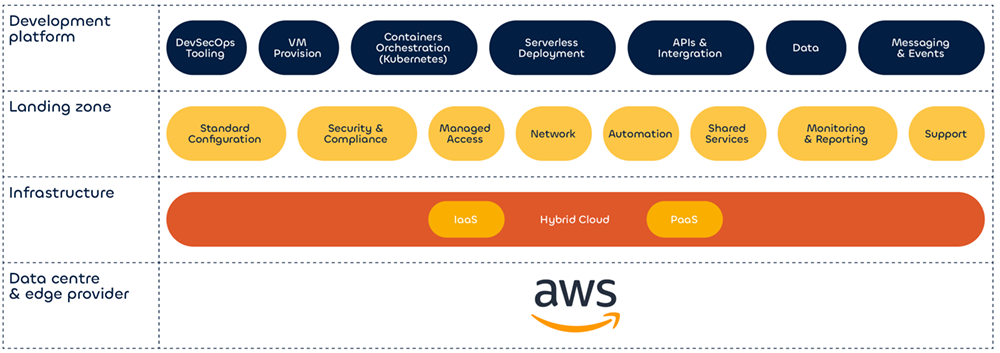
 Neil Butler, CEO of Cloudscaler, outlines a strategy for exploiting the full potential of cloud computing
Neil Butler, CEO of Cloudscaler, outlines a strategy for exploiting the full potential of cloud computing
It’s hard to believe that the UK Government introduced the ‘cloud first’ policy 10 years ago. So much has changed in that time - although when it comes to cloud, perhaps not as much as many had hoped. Some are even questioning whether cloud can really deliver.
I know first-hand that it can and am passionate about the potential of cloud to modernise departments and unlock the power of agile delivery. So, where do organisations go wrong and how can cloud deliver for the public sector?
The broken cloud promise?
Back in 2013 cloud technology promised a lot, offering the perfect solution to doing more with less from a technology perspective, the foundation from which public services could be improved while costs were reduced. The main attraction was the promise that cloud could significantly reduce not just capex but also operational costs, with other promised benefits including a reduction in complexity, increased flexibility at scale and improved security.
A decade on and the reality is that the move to cloud been slower than was hoped and the promised benefits of cloud have still to be realised for many. This is understandably causing frustration, with some departments becoming disillusioned.
While it’s easy to point the finger at cloud technology, Cloudscaler has actually found that, more often than not, it’s the cloud transformation approach, governance and operating model that is at fault.
Cloud has delivered
I was lucky enough to work within central government leading a critical transformation programme when the mantra was ‘cloud first’. I worked alongside teams who successfully built a cloud platform which, at the time, was one of the largest in Europe.
A staggering 60 projects were earmarked for migration to cloud, encompassing a daily workload of 60,000 containers and terabytes of data.
We migrated the first three workloads in less than six months, adding 25 more within an 18-month timeframe. We transformed multiple public facing services and internal case management systems from slow, manual, paper based services with processes spanning multiple aging systems to fully integrated, digital solutions that were quicker, more secure and more accurate.
All of this ultimately achieved the desired outcome - a much improved citizen experience.
In my current role, I speak to organisations that have not realised the expected benefits of cloud. Their cloud adoption has stalled, or cloud spend is spiralling and stakeholders are losing confidence. But it doesn’t have to be like that.
The root cause of lack of value
Cloudscaler has helped many organisations realise the value of cloud whilst also gaining control of cloud spend. The most common problems and blockers to innovation delivery that we see are:
- Competing cloud platforms: Teams excited by the promise of cloud have set off without a central strategy – as a result an organisation can end up with multiple cloud platforms, all configured slightly differently and built with varying levels of thoroughness. That lack of consistency exposes organisations to risk and negatively impacts the delivery pace of new services as well as the level of service provided to citizens.
- Lack of a unified, clearly communicated cloud strategy and governance framework: To migrate at scale, the strategy and approach must be well understood and clearly communicated. We see many organisations that fail to modernise their existing (waterfall) governance and operating model. This leads to progress being constrained by bureaucracy which ultimately stifles agile delivery.
- No centralised tools, services and controls: If your cloud platform team only provides a small number of common services, it means cloud users have to build a large proportion of their own services before they can use the cloud effectively. This takes time and results in duplication of effort across delivery teams.
- Taking a ‘big bang’ approach: Some organisations seek to build the perfect cloud platform before starting to move workloads. Just like waterfall delivery projects, this tends to mean the cloud platform is delivered late and over budget because it’s too big and complex, further delaying the realisation of benefits.
Build a platform for cloud success
As cloud technology has evolved the recommended approach to cloud transformation has also evolved. The strategy I have seen work consistently is the implementation of a single, secure cloud landing zone as recommended by the cloud hyperscalers.
A landing zone is the infrastructure layer between the hyperscaler account and the business application teams that build and run their applications on the cloud:

It provides common cloud standards, tooling and services that mitigate the risks of running cloud based production services – effectively encoding and mandating the risk stance of your organisation. It also simplifies cloud use and is the most important component for realising organisation-wide cost savings.
Once your cloud strategy includes a comprehensive cloud landing zone and a well thought through cloud operating model, which integrates with the rest of your organisation, you have a recipe for cloud success.
Sounds simple, I know. However, far too many organisations are getting the basics of cloud transformation wrong and paying a heavy price.
Reasons to be cheerful
Let’s not forget that cloud has been a major component of digital transformation for over 10 years and has successfully enabled major improvements in services across the public sector. Much has been learnt in the last decade and there is an opportunity to use cloud to deliver even more.
The key to future success however will be departments recognising that their requirements are not at core unique. The belief that they are is often behind decisions to build bespoke cloud platforms - a huge undertaking and one that means embarking on a journey of exploration, likely filled with trial and error. It is a journey that could take several years and incur significant cost
There are already cloud services and products available that can accelerate your cloud journey, saving time and money. By using best of breed cloud solutions, coupled with the implementation of an effective cloud operating model and governance framework, you will reduce costs and accelerate the cloud transformation journey, unlocking the elusive benefits of cloud far more quickly.
There is most definitely cause for optimism.
Avoid the pitfalls and go faster
There is a proven path to cloud success, and it’s based on the learnings of others. The leadership team at Cloudscaler each have over 20 years’ experience leading major transformation programmes and working with cloud across a wide variety of organisations. We have already learnt hard lessons, made mistakes and tried a lot of dead ends. This is experience we want to share to help others avoid their own trial and error journey of exploration.
We recently hosted a webinar with guest speaker Shelly Dar Rapaport, senior solutions architect, AWS. The agenda will help you understand why the delivery of value from cloud may be stalled and how to unlock that value more quickly whilst also reducing spend. We also talked through some case studies as well as provided top tips to optimise your cloud operations.
Catch up with the webinar: Learn How Leading Enterprises Are Getting More From Cloud
Or download the white paper: The true cost of cloud transformation
![]()





